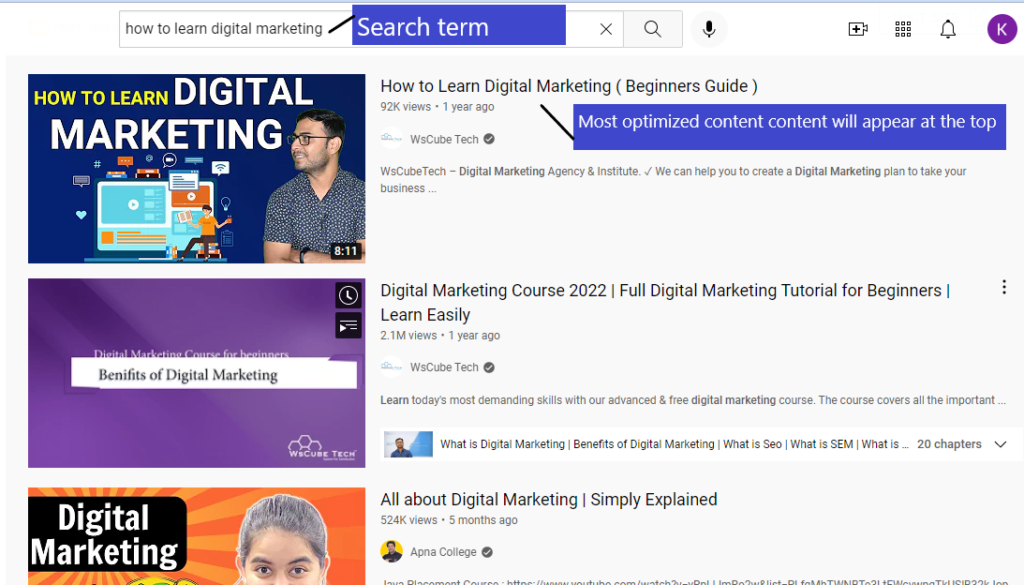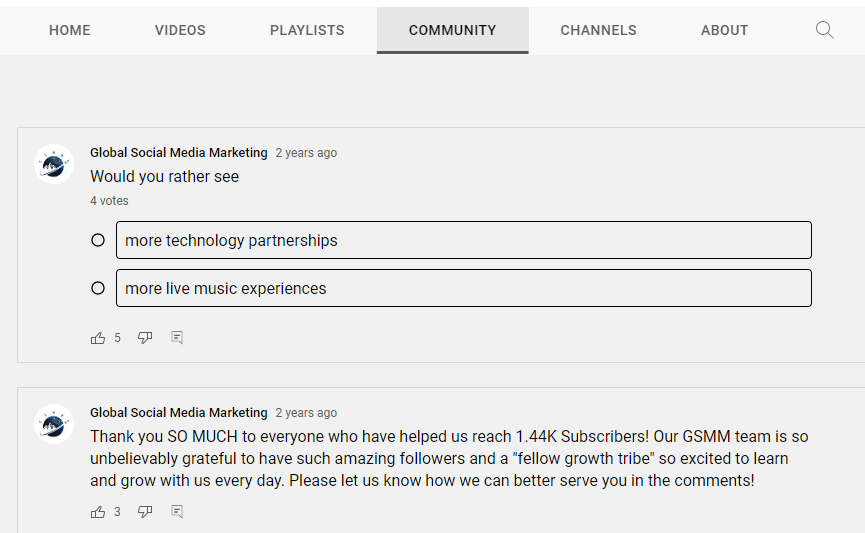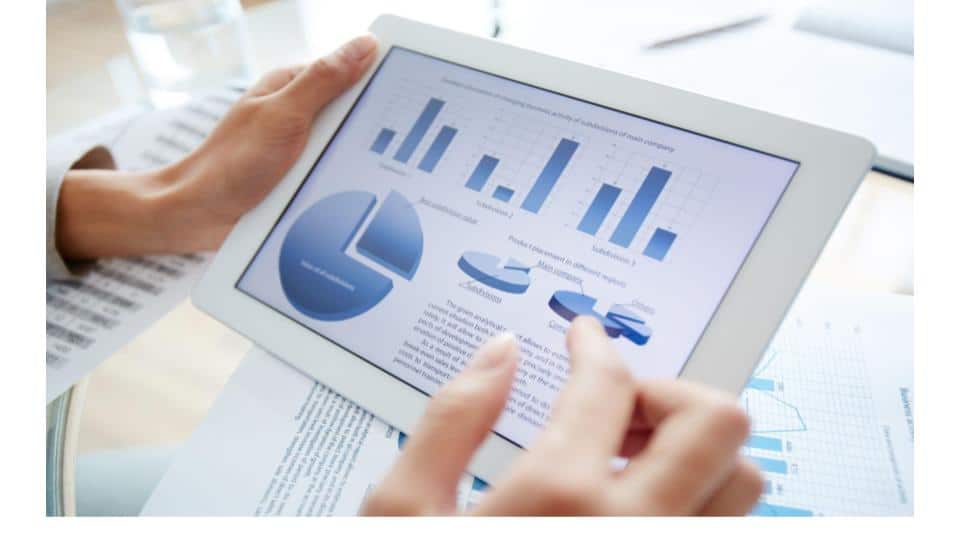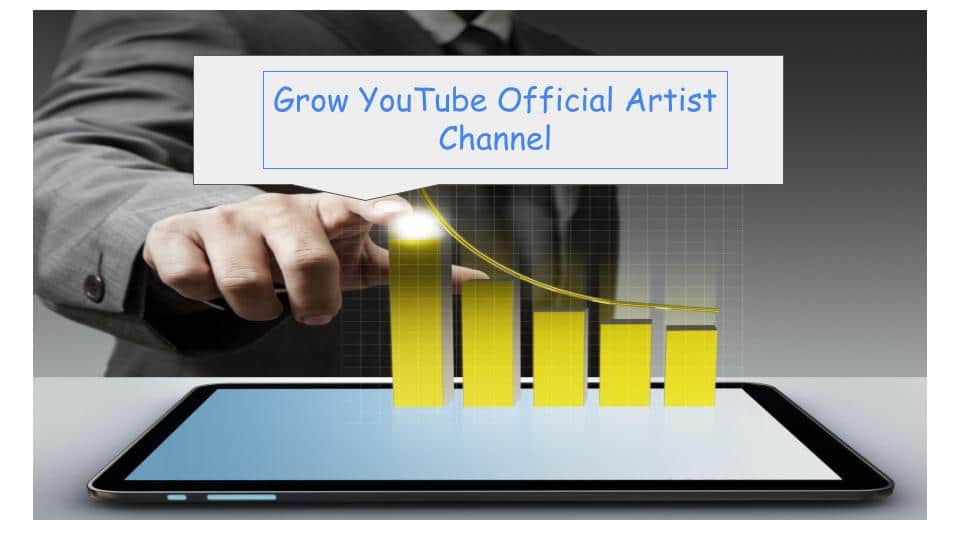Are you struggling to know how to grow your YouTube official artist channel? No worries! Because in this guide, we will show you the 9 best strategies that you can use to take your official artist channel to the next level. Let’s dive into it!
How to Grow YouTube Offical Artist Channel?
Here are the tips which you can use to grow your YouTube official artist channel:
1. Optimize Metadata for YouTube Searches
With over 500 hours of video uploaded every minute, making your content appear in YouTube searches can be a hard risk. If you want to rank high in YouTube searches then start optimizing the metadata of your videos. This will help you to get free organic traffic from YouTube searches. Check your YouTube analytics for the search terms viewers are using when they discover your videos and then optimize your videos for those search terms. You can also use YouTube SEO tools such as VidIQ to get the most profitable keywords and then include search terms in video metadata. Focus on the pain points of your potential audience by paying attention to things like:
- What they watch.
- What they don’t watch.
- How much time do they spend watching?
- Their likes and dislikes.
- “Not interested,” feedback.

2. Promote Your Links in Descriptions, Cards, and End screens
Promote playlist links in descriptions, cards, and end screens. You can use cards to promote your new releases, playlists, popular videos, downloads, tours, merchandise, and your artist’s website. You can also use cards in videos to sell tickets or merch, and link to pre-release songs and other videos. Enable cards to push approved merch, ticketing sites, music stores, and other websites.
Program end screens to promote your artist’s videos, playlists, channels, and websites during the last 5-20 seconds of a video, by creating a powerful end-of-video experience for viewers. Let’s say your end screen data reveals high click-through rates from viewers with mobile devices. So to increase album or merch sales, you can apply mobile-optimized end screens. These additional metrics display video and channel-level performance by: device type, YouTube product, Live/on-demand, playback location, operating system, video info language, card type, and sharing service.
3. Other Tips for Promotion
Some channels may be eligible to display US concert listings under their videos. Explore your traffic source data to see which blogs, websites, and social media outlets drive the most views to the channel. Consider asking these sites and influencers to feature the artist’s promotional materials. Post links on social media platforms where fans are most engaged. If you’re part of a label or artist network, ask the other artists to promote your releases in their playlists.
4. Use Community To Promote
The community tab is a simple way to engage with your viewers and help an artist express themselves beyond video. Community posts can appear in viewers’ home feed and subscriber feed. To increase your channel engagement, consider complementing your regular video upload schedule with a variety of community posts. Community allows you to post text, pictures, GIFs, polls, and videos, like collaborations or appearances from another channel, and notify your subscribers when you post. Here is a quick snapshot of the GSMM community section.

Use your community to:
- Program strategically: Maintain a mix of personal posts, promotional posts, and transactional posts so fans see the community as a place to hear directly from their favorite artists.
- Be authentic: Use text to contextualize posts and let your fans know what action you want from them. You can use the artist’s voice to ask questions. Give hearts and like your fan comments to show you care.
- Use video posts carefully: Focus on highlighting catalog content and posting collaborations that live on another channel. Spotlight your fan content instead of re-posting the artist’s core content.
- Engage the audience: Link to a playlist with a poll card and ask fans to choose their favorite songs. Ask them to comment on your posts and respond so they know the artist is listening.
- Promote the music: Post links to tour tickets with descriptive text and take fans behind the scenes or other exclusive tour content.
5. Leverage YouTube Premiers
YouTube Premieres lets you and your viewers watch and experience a new video together. It’s like a movie or TV show premiere. Premiering your video lets you schedule a video upload and create a buzz around the video with a shareable watch page. A premiere gives your fans something to get excited about. It also helps to boost a video’s initial views, which can improve its discoverability. Promote your premiere watch page in the community and across social media to encourage an ample audience. Tell viewers to subscribe, turn on notifications, and set a reminder so they won’t miss your event. Interact with fans in the comments before and during the premiere to make the moment even more memorable for them.
6. Use the Reach Viewers Tool
The reach viewers tab shows you how wide of a reach an artist has on YouTube. It includes the number of unique viewers, the top traffic sources driving viewership, and how these things have changed. The data in your reach viewers tab include:
- Total impressions, views, unique viewers, and impressions click-through rate.
- How impressions led to watch time.
- Traffic source types.
- Top external traffic sources.
- Top suggested video traffic sources.
- Top playlist traffic sources.
- Top YouTube search keywords.
Focus on the sources that are driving success. Review the top keywords people are searching for when they find your videos. Consider including this into your metadata for improving your discovery. To evaluate your global reach, look at your geography data. You can see where views are coming from by country, comparing subscribers and non-subscribers. If, after examining your demographic data, you notice that a high percentage of viewers live in another country, you can translate video titles, descriptions, and subtitles to their language. Translating metadata can help international viewers find an artist and improve their viewing experience. Here is the list of YouTube Translation tools. After you’ve translated content, your translation metrics can help you understand how your efforts have paid off. You can also segment traffic by “Video info language” and “Subtitles and CC” to see which metadata contributes the most to watch time and views.
7. Measure the Success of YouTube Official Artist Channel
YouTube analytics for artists aggregates song data across all the channels where an artist’s music lives. For e.g. artist-owned, operated channels, topic channels, and VEVO. As well as the views from all versions of a song, including official music videos and art tracks. These analytics give you a comprehensive picture of how your fanbase is finding and engaging with your artist’s catalog on YouTube.

YouTube analytics for artists’ data include:
- Top songs, countries, cities in the US, and cities outside the US.
- Song views over time. Note: they count views from videos that contain all, or most of, a song.
- How fans discovered your song.
- Top sites driving traffic to songs.
- Top YouTube search terms leading to plays.
After analyzing your YouTube analytics for artists, you can easily make future decisions such as:
Decide where to go – Review your top countries to understand which countries a channel’s viewers are from. If you manage an official artist channel, YouTube Analytics for Artists can tell you the artist’s top tracks by location. You can use this data for taking decisions on tour destinations, venue and ticketing choices, and where to connect with fans.
Choose which tracks to play – Use your watch time metrics to see the top-watched videos on a channel, and use YouTube Analytics for Artists to understand the artist’s top tracks by location. Both features give you a better sense of what songs are most popular and where. This information can help you recommend which tracks the artist could play to keep audiences excited and happy.
Follow the superfans – Look at your subscriber’s data to learn where an artist has a highly invested audience. To find your most engaged fans, look at where videos have received the most likes, comments, or subscribers. When touring those destinations, consider planning something special, like a meet-and-greet or live stream, for the die-hard fans.
8. Music Charts and Insights Tool
Music Charts & Insights is a public tool that displays your top music videos of the current week. It can help you understand what kind of music viewers are discovering and enjoying on both a local and a global scale. You can see the top 100 videos (ranked by view count) or a breakdown of viral videos (scored using several popularity factors), tracks, or artists. This data can help you to target marketing campaigns by region. Use this data to understand the popularity of specific songs or artists on YouTube when trying to gain radio AirPlay or negotiate brand deals, and guide decisions like where an artist should go on tour and which tracks to play. Third-party charts, such as Billboard, the UK Official Chart, and Nielsen, incorporate the data from YouTube’s Music Charts & Insights into their own data.
9. Grow Your Revenue
Global digital music streaming continues to grow at an exponential rate [Source: Nielsen]. So, artists can make money from both loyal fans and casual listeners around the world. Artists in all genres can make money from doing what they love. YouTube paid out over $1.8 billion in revenue to the music industry from advertising alone between October 2017 and September 2018. YouTube has licensing agreements with many major and independent record labels, paying them revenue from ads and YouTube music premium subscriptions.
Labels collect this revenue based on their ownership or control of master recordings. Labels and distributors who use our Content ID system can also help an artist collect revenue when other YouTube videos, such as fan uploads, include their sound recordings. After the labels receive their money from YouTube, they’re typically responsible for paying a share of this revenue to their respective artists. This amount varies according to the contract between the artist and the label. The standard contract between YouTube and a label (and sometimes with an artist directly) is called a sound recording audio-visual agreement, or SRAV. The stipulations in an SRAV vary by contract. They grant YouTube the right to stream the label’s music while outlining the legal obligations between the label and YouTube.
Final Thoughts
Have you enjoyed this article on how to grow your YouTube official artist channel? Let us know your thoughts in the comments. At GSMM, we help businesses to grow with Google and YouTube ads. If you’re interested in these services, book a free consultation call with our CEO.

